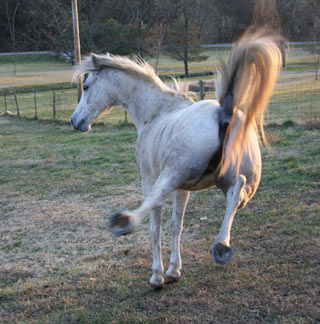Currently nursing a bruised tailbone after being propelled twice from a four-legged fiend I had a disagreement with regarding a small upright jump, I can’t help but wonder why we do these stupid things.

Horses can be hazardous enough when you’re on top of them, but they’re not all angels at ground level either. The results of a 2014 study commissioned by BEVA revealed equine vets are at the highest risk of sustaining injury out of all the civilian occupations in the UK.
While these results have been published for some time, and whether the news was surprising or not on first reading, my recent injury certainly made me consider more seriously whether we are cautious enough around horses in a veterinary context.
I was probably about as safe as possible this week during my falls, kitted out with a high standard helmet and air jacket, yet I still got injured. We can’t prevent every injury or accident possible, but we can try to take measures to minimise the damage.
The second most common site of injury reported by equine vets in the study was the head, but when was the last time I saw a vet enter a stable wearing any form of head protection? Never.
In some cases, I believe this is a matter of pride, practicality or even client confidence. If a vet turned up at the yard with a riding hat on, clients may believe they’re not confident around horses – and how difficult is it to look into a horse’s mouth while rasping teeth with bulky headgear?

However, safety should come first and perhaps vets should consider being more vigilant, despite the potential judgemental attitude they may be presented with.
What about repro work? I’ve seen many a fractious thoroughbred mare lash out with her hindlegs while being scanned, luckily with an appropriate board or stocks used to protect the vet. But I have seen an equal number of occasions when vets have been rectal scanning with nothing except confidence in a “good tempered” horse to protect them.
So, how can we make situations like that safer, short of carrying a portable kick board in the car or persuading clients to invest in appropriate equipment.
It should be a daunting prospect entering a profession that has been proven to carry the highest risk of injury in the country, and yet most of us take this as a given, not giving it much thought. The results of the study have only confirmed what many of us already knew about equine work, but I think it should act as a wake-up call to encourage vets or practices to alter policies to maximise safety in the field.
After all, it would be pretty miserable work if most of the time was spent hobbling around like I currently am.

Leave a Reply